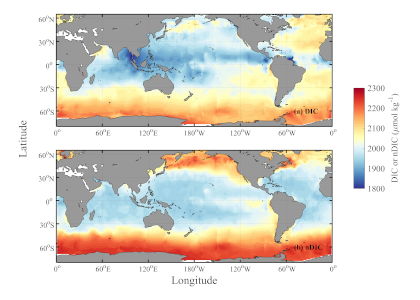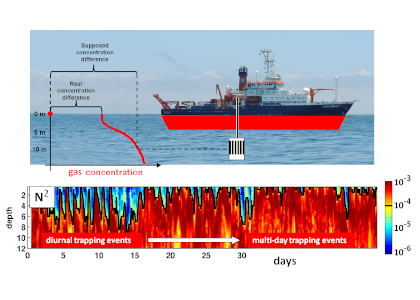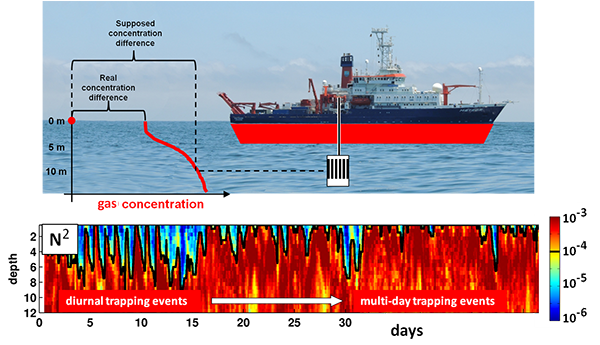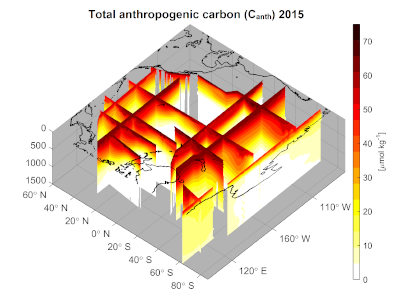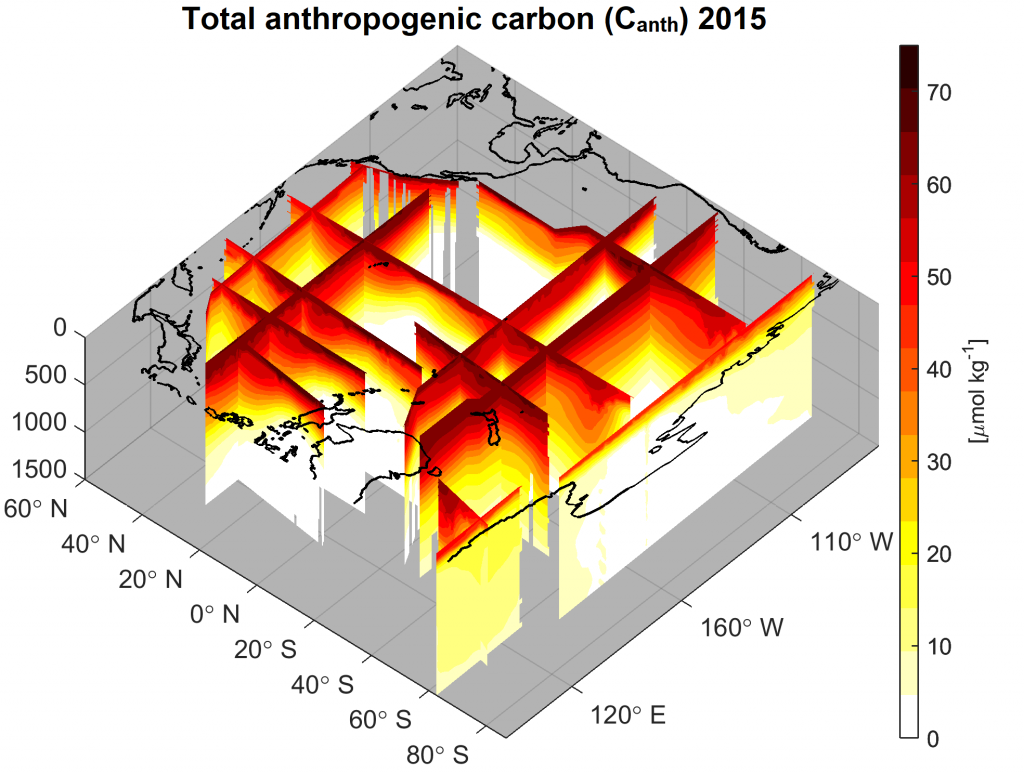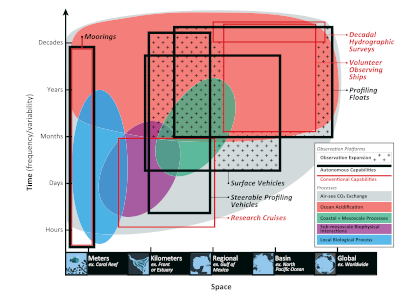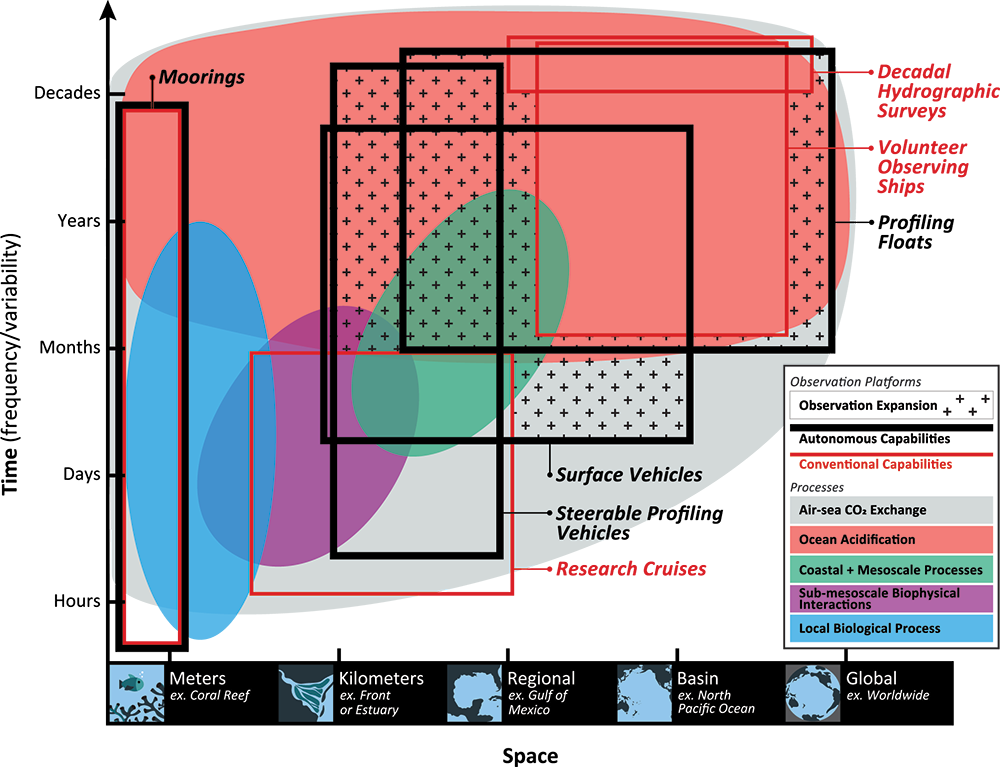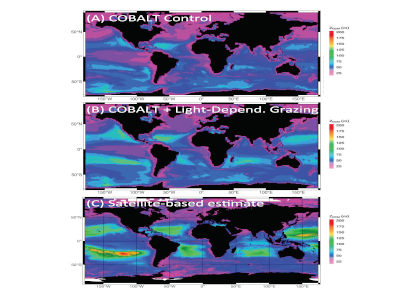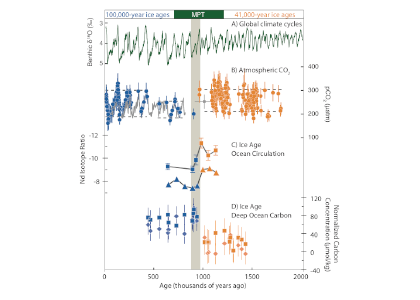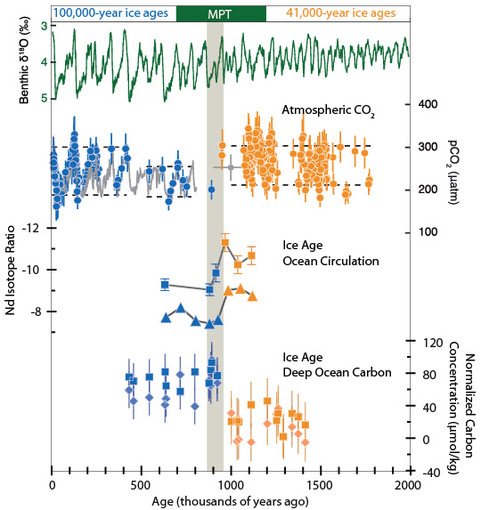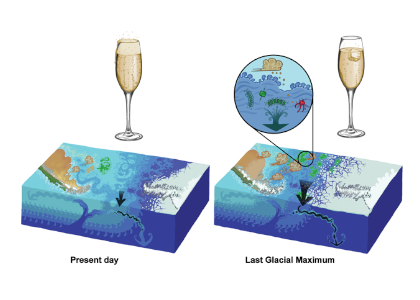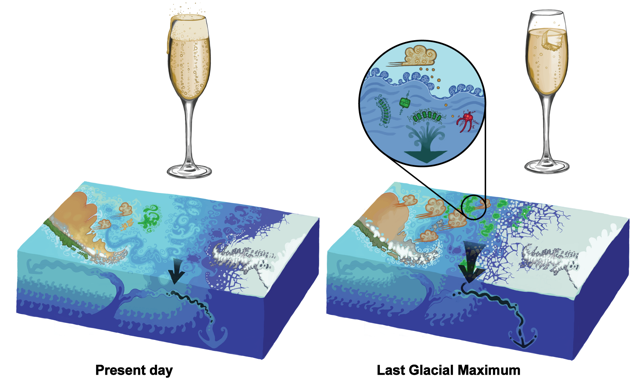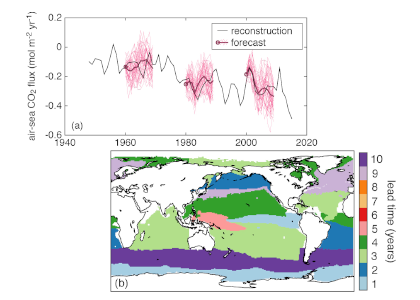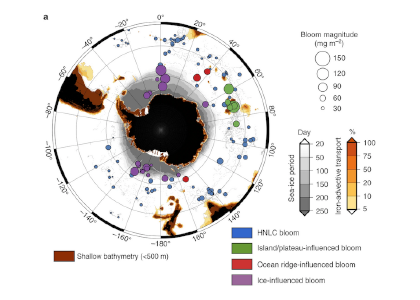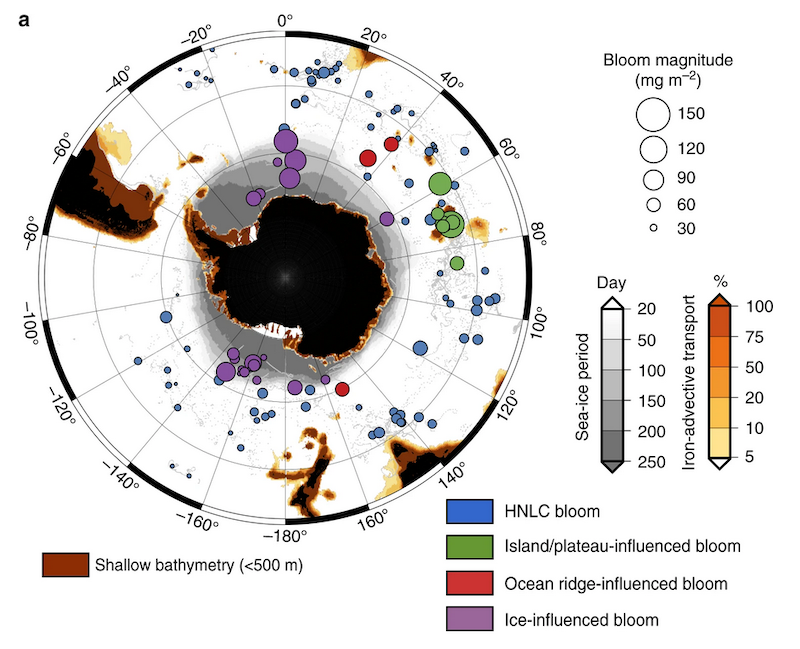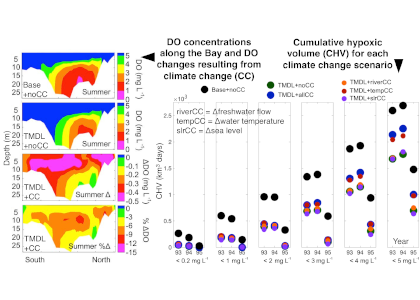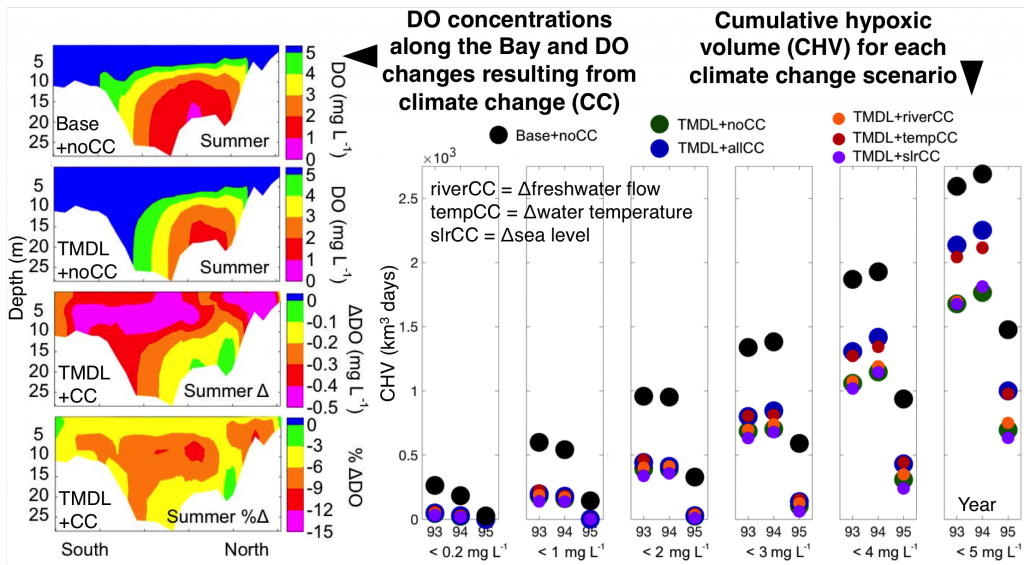What drives the latitudinal gradient in open-ocean surface DIC concentration? Understanding the processes that drive the distribution of carbon in the surface ocean is essential to the study of the ocean carbon cycle and future predictions of ocean acidification and the ocean carbon sink.
Authors of a recent study in Biogeosciences investigated causes of the observed latitudinal trend in DIC and salinity-normalized DIC (nDIC) (Figure 1). The latitudinal trend in nDIC is not driven solely by the latitudinal gradient in temperature (through its effects on solubility), as is commonly assumed. Careful analysis using the Global Ocean Data Analysis Project version 2 (GLODAPv2) database revealed that physical supply from below (upwelling, entrainment in winter) at high latitudes is another major driver of the latitudinal pattern. The contribution of physical exchange explains an otherwise puzzling observation: Surface waters are lower in nDIC in the high-latitude North Atlantic than in other basins. This cannot be accounted for by temperature difference but rather is explained by a difference in the carbon content of deeper waters (lower in the subarctic North Atlantic than in the subarctic North Pacific or Southern Ocean) that are mixed up into the surface during winter months.
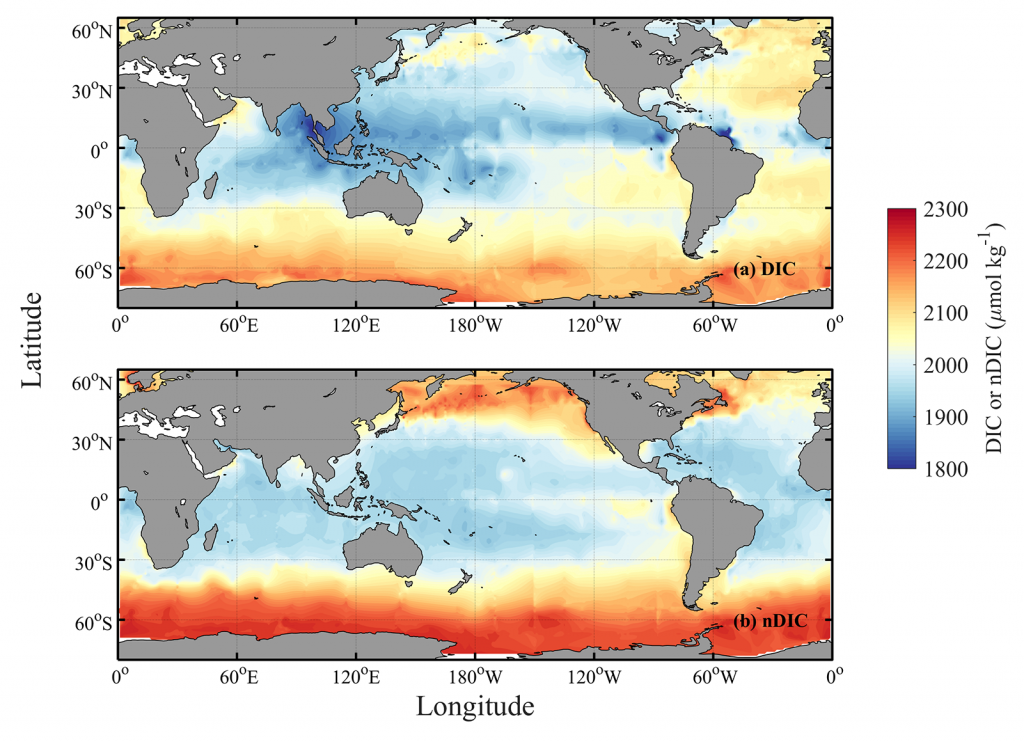
Figure caption: (Top) spatial distributions of surface ocean DIC and (bottom) salinity-normalised (nDIC). Both, most notably nDIC, increase towards the poles. Values are normalised to year 2005 to remove bias from changing levels of atmospheric CO2 in some observations before and after 2005. Data are from GLODAPv2.
These results also suggest that the upwelling/entrainment of water that is high in alkalinity generates a large and long-lasting effect on DIC, one that persists beyond the timescale of CO2 gas exchange equilibration with the . That is to say, the impact of changes in upwelling on the ocean’s carbon source-sink strength depends not only on the DIC content of the upwelled water but also on its TA content.
Authors:
Yingxu Wu (University of Southampton)
Mathis Hain (University of California, Santa Cruz)
Matthew Humphreys (University of East Anglia and University of Southampton)
Sue Hartman (National Oceanography Centre, Southampton)
Toby Tyrrell (University of Southampton)

